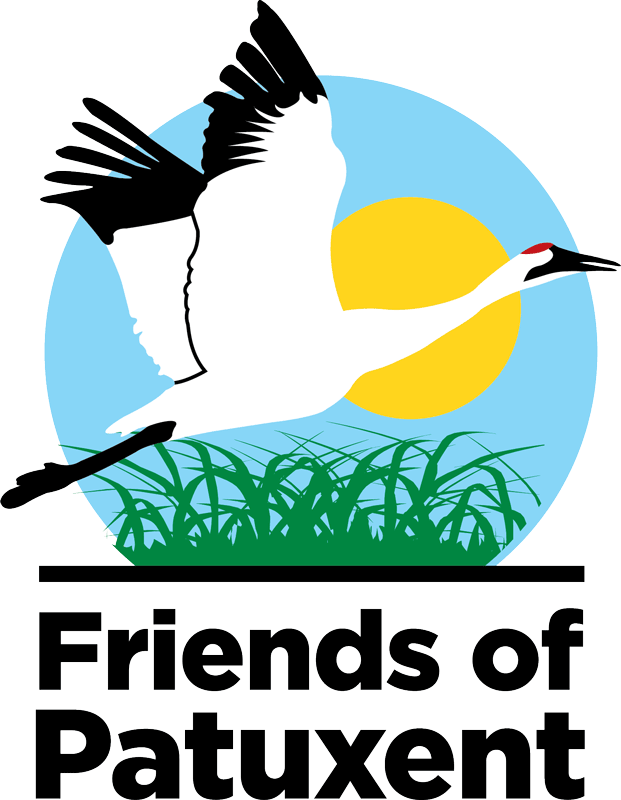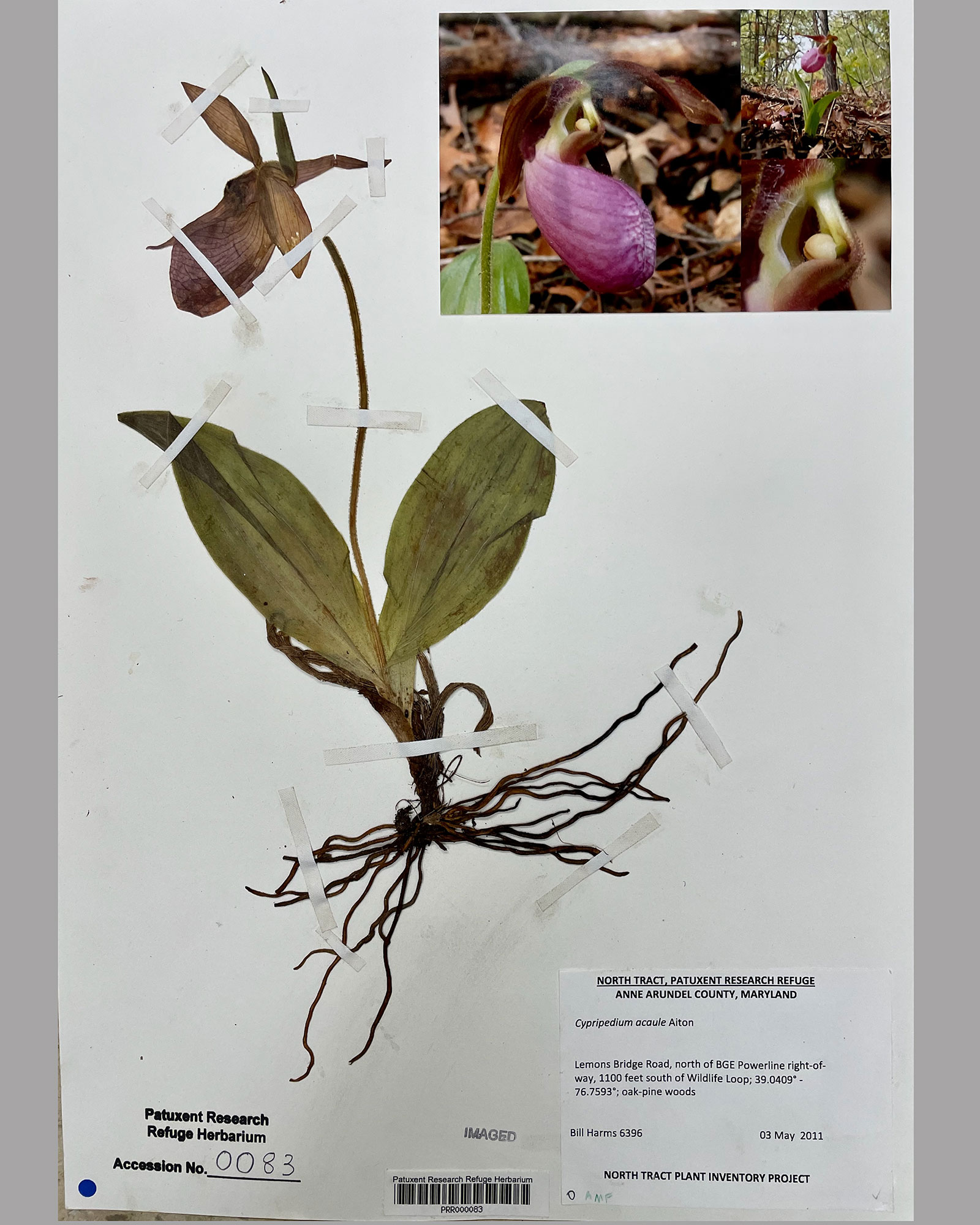Friends of PatuxentSupporting Research, Wildlife Conservation, and Education at the Patuxent Research Refuge |
Hotchkiss-Harms Patuxent Research Refuge (PRR) HerbariumThe National Wildlife Visitor Center on the South Tract at Patuxent Research Refuge (PRR) houses the Patuxent Research Refuge (PRR) Herbarium, a reference collection of plants found on the Refuge. The collection consists of lichens, mosses, ferns, and flowering plants (angiosperms). The Herbarium contains over 5,300 voucher specimens representing approximately 1,250 species. The principal curators have been Neil Hotchkiss and Bill Harms.
Currently, the Herbarium is maintained exclusively by volunteers working to collect specimens in the field, mount the vouchers, and digitize the collection. The PRR Herbarium team often collaborates with other institutions and members of the scientific community by lending out material either for species confirmation or to share the collection.
The oldest specimens in the Herbarium date back to 1936, when botanist Neil Hotchkiss and other scientists on the Refuge staff surveyed the flora on the newly designated 2,650-acre refuge. At that time, the Refuge’s land consisted of what we now call the South and Central Tracts, and the Herbarium specimens were representative of the plant life at those locations. The Herbarium was curated mostly by Neil Hotchkiss and by fellow scientist Francis M. Uhler from approximately 1940 - 1970.
After 1970, the herbarium was not utilized to its full capacity, and until about 2010, was in caretaker status on Central Tract under the US Geological Survey (which had assumed responsibility for the research center at the Refuge).
In 1991, the Refuge was expanded to its present size of 12,841 acres through a transfer of 7,600 acres from the US Army’s Fort George G. Meade; this former Army land became the Refuge’s North Tract and brought with it new plant communities that were not represented in the Herbarium at the time.
In 2010, volunteer botanist Bill Harms became interested in the flora of PRR and eventually took steps to resurrect and move the Herbarium to the Refuge’s North Tract Visitor Center. He then began a survey of the North Tract’s flora and a re-survey of the older parcels of the Refuge, the Central and South Tracts. Many of the specimens in the present-day Herbarium, which was relocated to the National Wildlife Visitor Center in 2020, were added by Bill Harms and other volunteers working under his supervision.
The PRR Herbarium specimens present an array of the biodiversity of plants, including rare, threatened or endangered species that occur on the Refuge. Tissue from the specimens can be used to examine and determine the unique taxonomic differences of various species either on a macro- or micro-level, or via genetic material. Since the PRR Herbarium houses plants collected over decades, it may be useful as an indicator of climate and biological change, invasive species encroachment, and human impacts.
As Dr. Matthew C. Perry, Scientist Emeritus of PRR, writes, “It is important to realize that the herbarium was never a research study itself. It was always maintained as support for other studies.” The intent of the PRR Herbarium is that the voucher specimens do not simply sit idle inside the cabinets but rather are examined and studied by the Refuge’s volunteer team and by researchers, scientists, and professional botanists throughout the country. The PRR Herbarium is a dynamic resource that will serve as a barometer for future generations seeking to discover the unique and rich flora and ecosystems of the Patuxent Research Refuge.
The PRR Herbarium is a member of the North American Network of Small Herbaria, which displays a profile for the PRR Herbarium.
By Helen Lowe Metzman
December 8, 2021 |
Voucher specimen of Pink Lady's Slipper, Cypripedium acaule, from the herbarium collection To follow activities of the PRR plant surveys for the Herbarium, please visit our Facebook page! |

